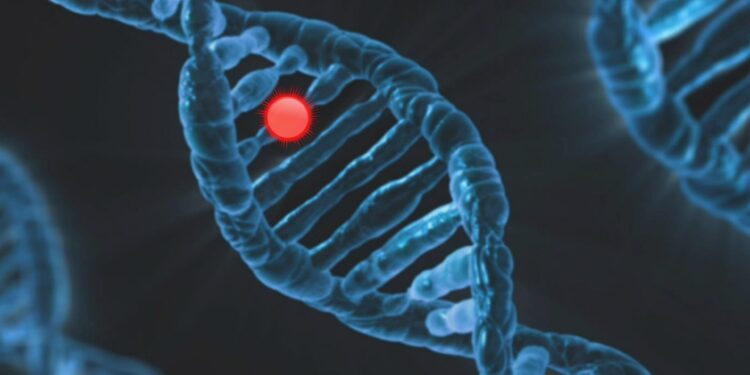Credit: Pixabay/CC0 Public domain
Mutations, which continually occur in every cell of our body, are major contributors to cancer, aging and neurodegeneration. Although exposure to mutagenic chemicals or errors in cellular processes during DNA replication contribute to these mutations, the exact distribution and patterns of these changes on human chromosomes have remained unclear until now. mystery.
Dr. Fran Supek, researcher at ICREA and head of the Genomic Data Science Lab at IRB Barcelona, and Marina Salvadores, Ph.D. studying in the same lab, delved into the landscape of DNA mutations , revealing unexpected patterns that differentiate individuals in terms of mutation risk. The results were published in Natural cancer.
Previous work from the lab identified a “genomic spell checker,” a DNA repair mechanism dedicated to reducing the chance of mutation in key parts of human chromosomes. Building on these results, the present study aimed to determine whether mutation risk varies between individuals and, if so, to identify the mechanisms underlying these differences.
“This research not only expands our understanding of the factors influencing mutation rate distribution, but also has significant implications for cancer progression, therapeutic strategies, and advances in regenerative medicine,” says Dr. Supek.
A genomic analysis of “big data”
To answer these questions, the researchers conducted a comprehensive analysis of the genomic sequences of more than 4,000 tumors from various organs. Unlike previous studies focused on tissue-specific mutation risks, this study specifically targeted individual differences in mutation susceptibility.
Employing a “big data” genomics approach, the team used machine learning algorithms to identify recurring patterns in chromosome segments. They discovered 13 distinct patterns, including 10 corresponding to different tissue types. Unexpectedly, the remaining three patterns were observed in almost all tissues, revealing that the density of mutations in specific genes varies significantly between individuals.
Join the dots
To understand these unexpected trends, the researchers looked at additional data, including gene expression and genetic aberrations, in the cancer cells. The analysis revealed a surprising correlation between increased cell proliferation and changes in mutation risks. Disruptions in two crucial tumor suppressor genes, TP53 and RB1, known to regulate the cell division cycle, have been identified as key influencing factors, causing changes in the risk of mutations between chromosomes.
These chromosomal segments exhibited not only altered mutation risks, but also large-scale “remodeling” of normally inactive chromosomal regions. “This remodeling, correlated with increased cell proliferation, reflects changes in mutation risks, providing unique insight into the interplay between mutations and epigenetic alterations,” explains Marina Salvadores, first author of the study.
Decoding the evolution of cancer
The implications of this study extend beyond basic research. By identifying the cancer genes most affected by changes in mutation risk between individuals, scientists have provided a roadmap for anticipating the trajectory of cancer evolution. This knowledge is particularly relevant for anticipating responses to cancer treatment, as it can help predict the development of drug resistance mutations in tumors.
The study also offers valuable insights into the epigenetics of human cells, highlighting that the epigenome undergoes dramatic changes in response to increased or disrupted cell proliferation. This understanding has potential implications for cellular reprogramming and regenerative medicine, opening new avenues for future research and therapeutic interventions.
More information:
Salvadores, M. et al, Alterations in cell cycle genes are associated with a redistribution of mutation risk between chromosomal domains in human cancers. Natural Cancer (2024). DOI: 10.1038/s43018-023-00707-8
Provided by the Biomedicine Research Institute (IRB Barcelona)
Quote: Scientists discover 13 distinct DNA mutation risk patterns with implications for cancer progression (January 10, 2024) retrieved January 10, 2024 from
This document is subject to copyright. Apart from fair use for private study or research purposes, no part may be reproduced without written permission. The content is provided for information only.



